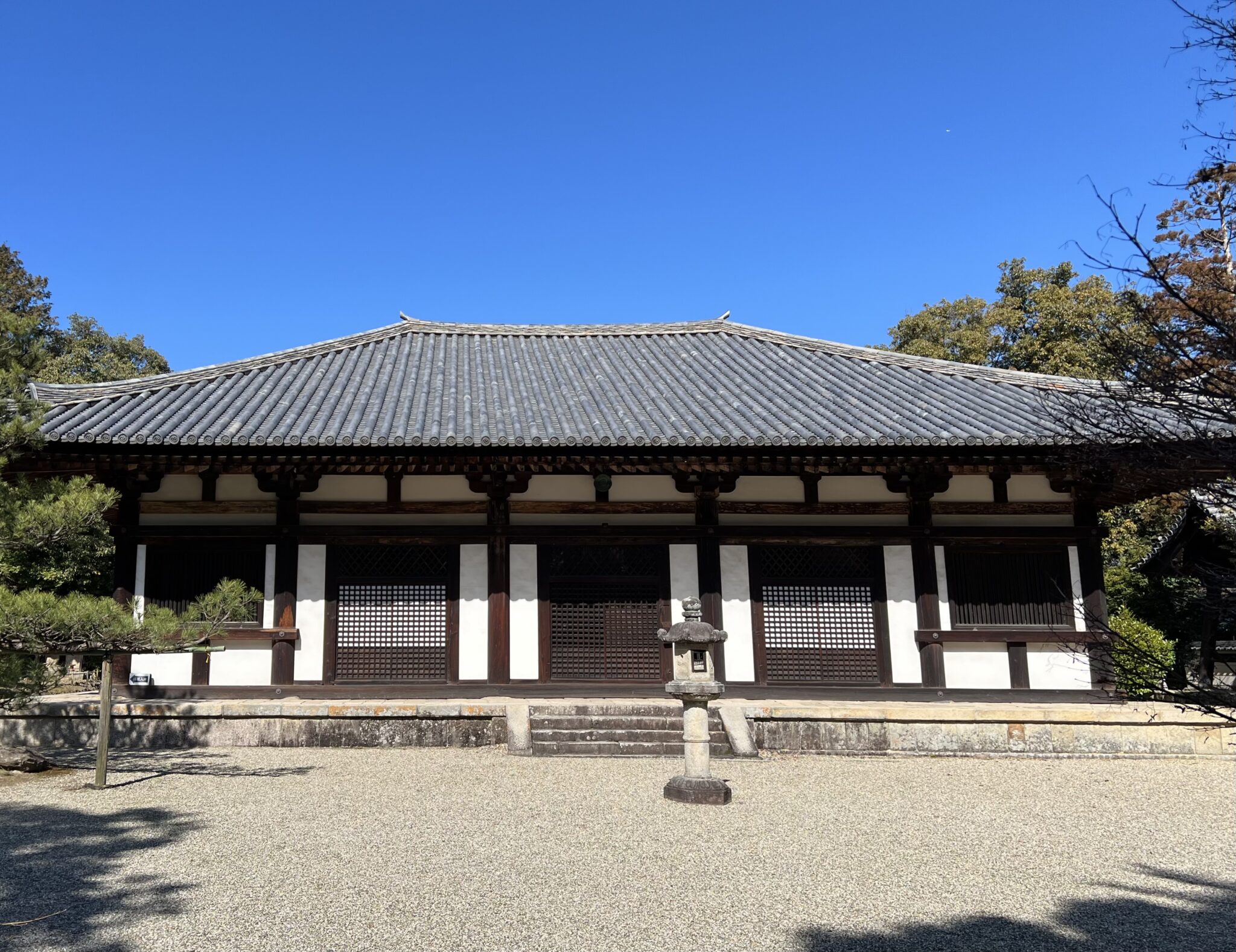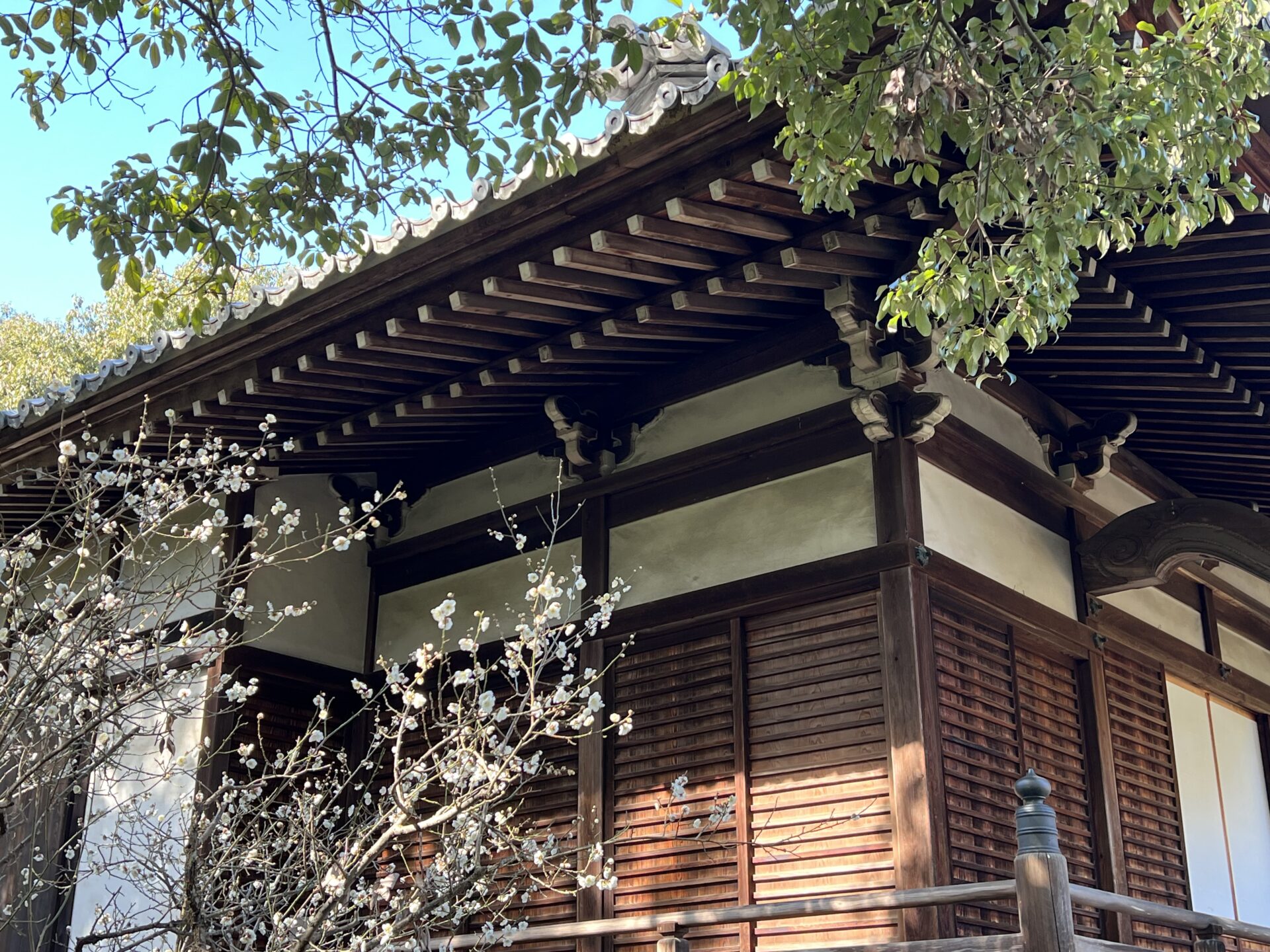Akishinodera is located in a peaceful area where rural and residential areas blend, slightly northwest of the grid of Heijō-kyō in the northern part of Nara City. From its graceful name, one might imagine a feminine and delicate temple, and it is indeed famous for its elegant statue of Gigeiten, which embodies that very image. Gigeiten is believed to bring blessings for the success of performing arts, and it is deeply revered by those in the entertainment industry, artists, and creators. This is the only statue of its kind in Japan
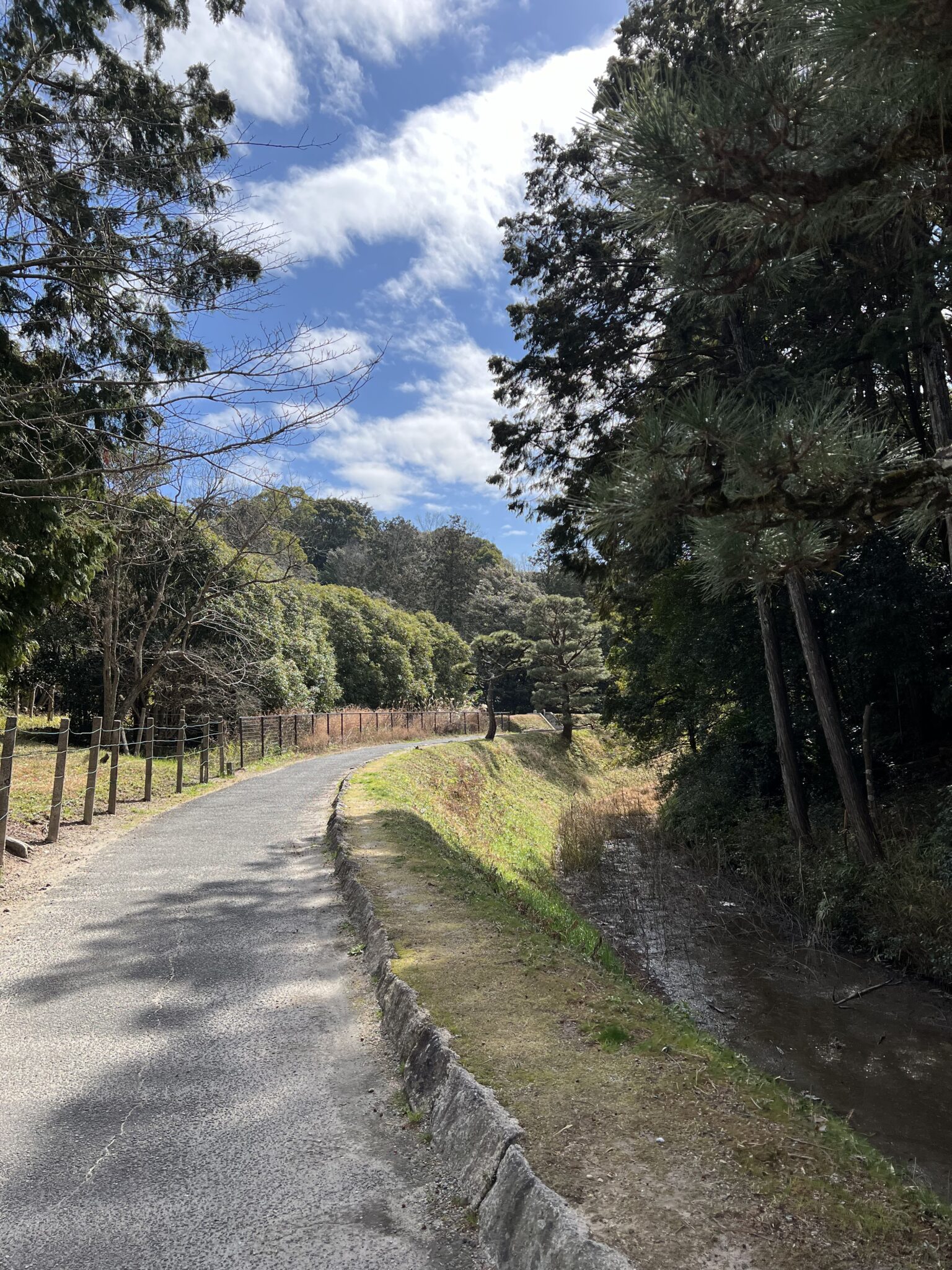
My first visit to Akishinodera, a place I had always wanted to go, was during the plum blossom season. Starting near Kintetsu Nara Station, I cycled through the vast Heijo Palace site and along a self-chosen route that took me around the scenic Saki Tataritsu Kofun, with its abundance of water and greenery. Exploring this area by bike on a clear winter day felt liberating and was incredibly enjoyable.
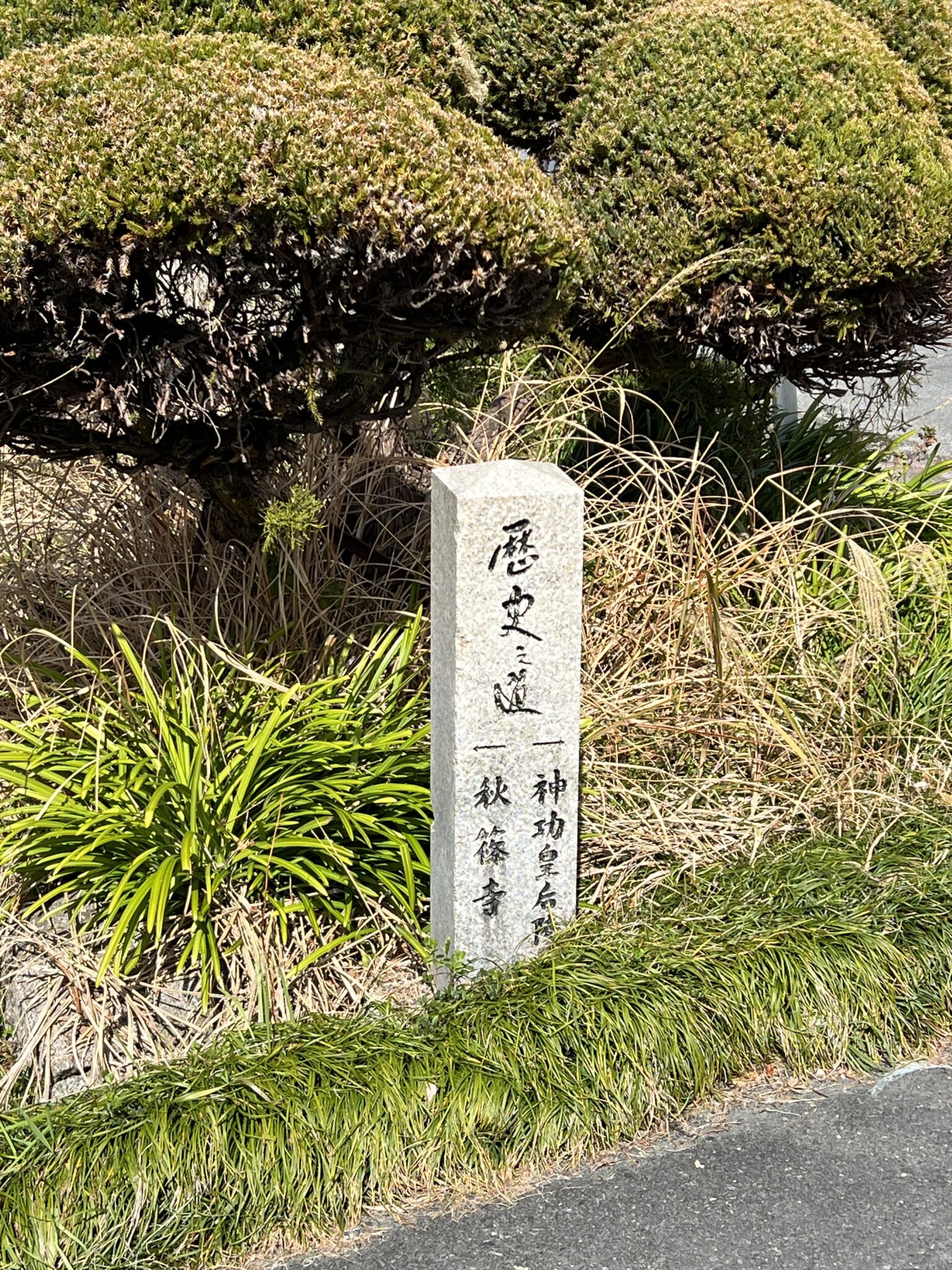
Access
From Kintetsu Yamato-Saidaiji Station, it’s about a 15-minute walk via the “Historical Path.”
It is said that long ago, there was a territorial dispute between Saidaiji and Akishinodera, indicating that both temples were once vast. The “Historical Path” is a hiking course established by Nara City in 1972, and it forms a loop around the city. The route connecting Saidaiji and Akishinodera marks the westernmost part of this path.
Akishinodera has two gates, the East Gate and the South Gate, and when approaching from the Historical Path, you will arrive at the South Gate. This time, I came from the east, so I entered through the East Gate, viewed the temple, and exited through the South Gate. These two gates are easily accessible along the outer wall of the temple grounds.
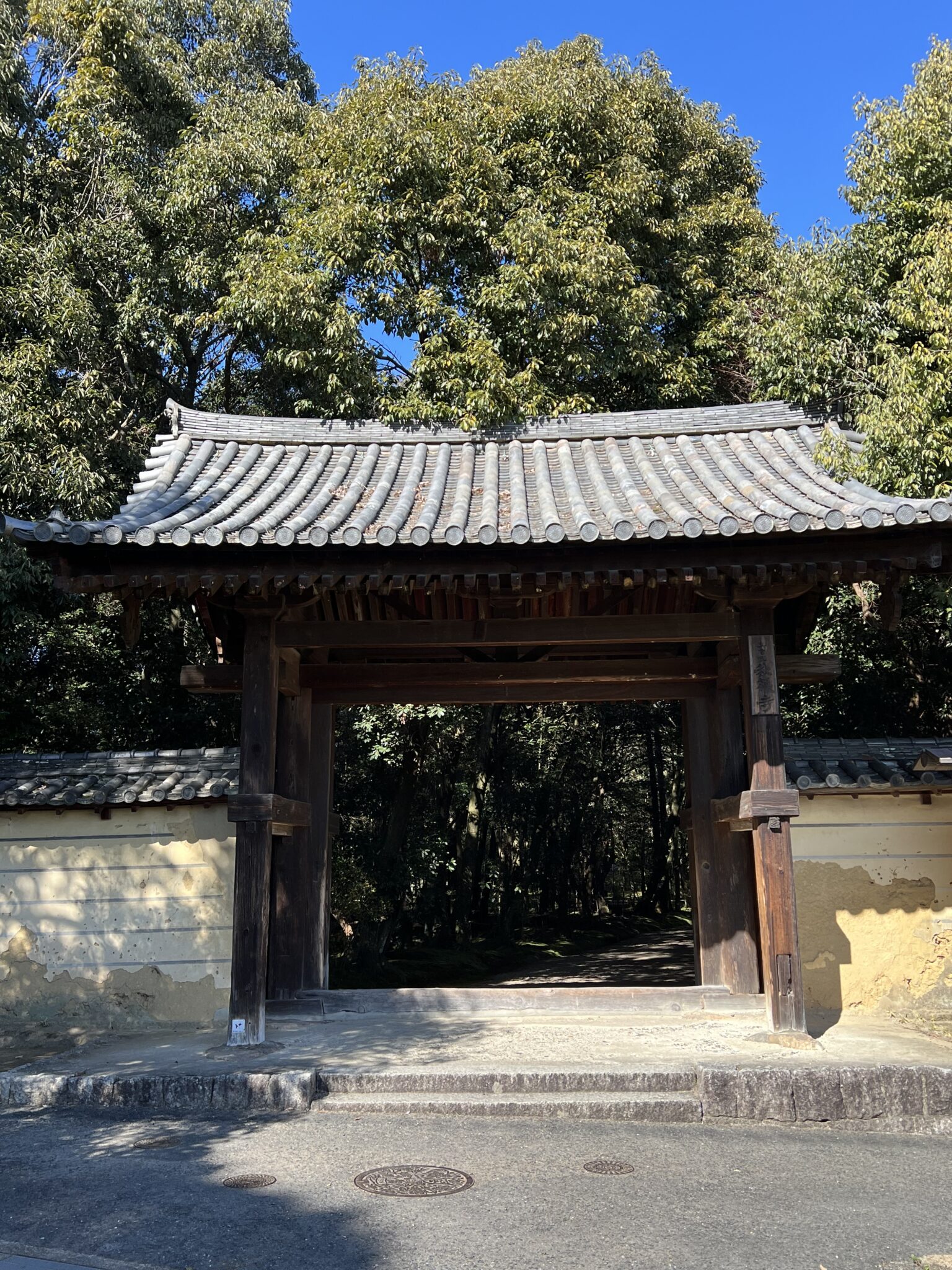
Temple Ground
Whether you enter through the South Gate or the East Gate, you will immediately feel a sense of tranquility as you are surrounded by the beautifully maintained grove and moss garden within the temple grounds. In Nara, many temples and shrines are impeccably kept, and it’s always impressive. On the day I visited, a gardener was meticulously tending to the grounds.
As you walk along the gravel path, dappled with sunlight and flanked by green moss on both sides, you’ll arrive at the temple’s entrance, where you pay the admission fee. To the right stands the Main Hall, a National Treasure rebuilt in the Kamakura period, and the graceful curve of its tiled roof and serene presence are truly breathtaking.
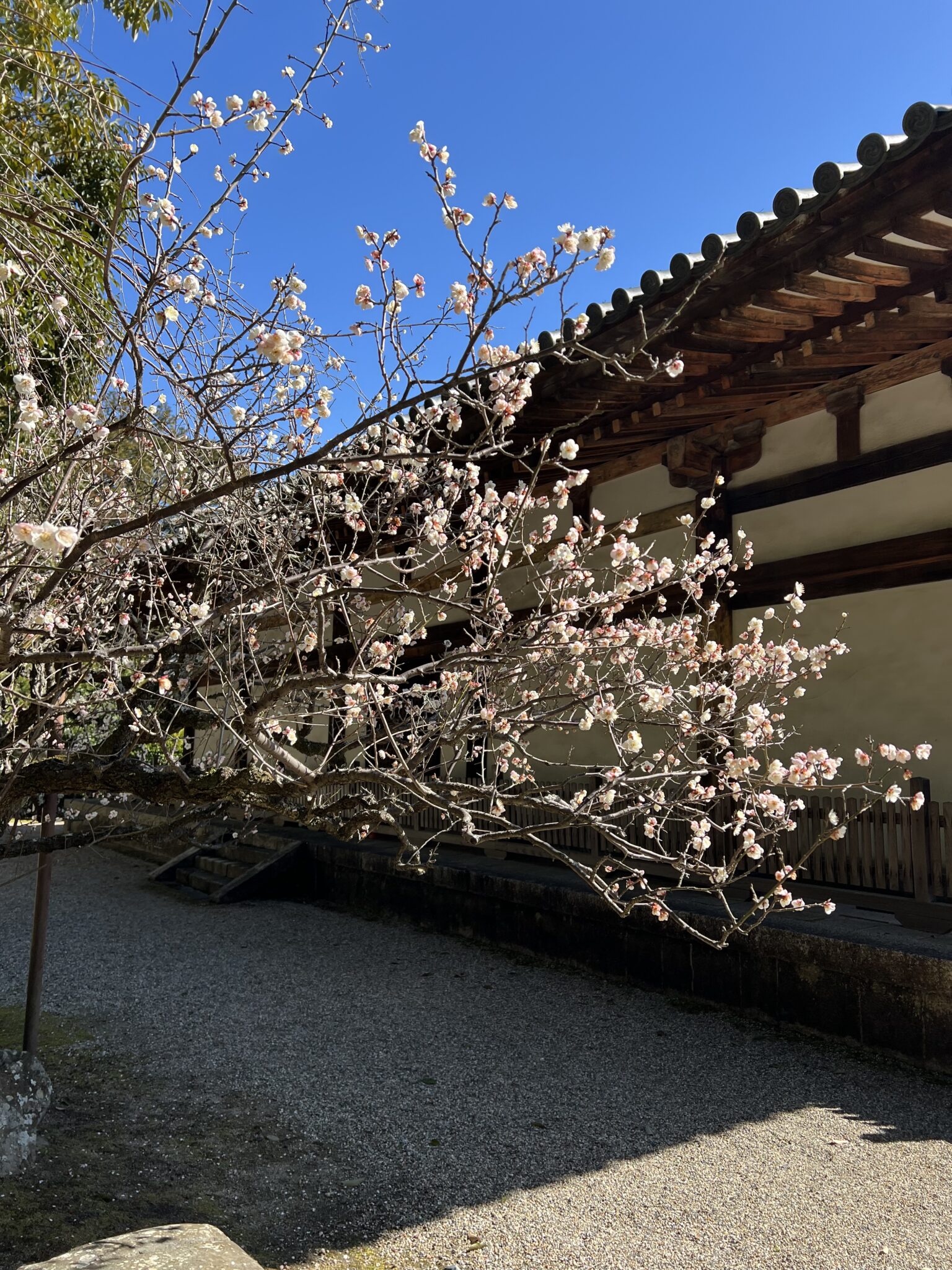
History
According to documents from the Kamakura period, Akishinodera was founded in the 7th year of the Hōki era (776) by Zenju, following an imperial edict from Emperor Kōnin. The first official mention of the temple appears in the Shoku Nihongi, which records that in the 11th year of the Hōki era (780), Emperor Kōnin granted tax-exempt rice fields to Akishinodera. This supports the likelihood that the temple was indeed founded in the 7th year of the Hōki era.
It is said that Emperor Kōnin (and those around him) plotted to make his first son, Prince Yamabe, born to Takano no Niigasa, who had a lower pedigree, the crown prince. In doing so, they falsely accused Empress Inoe, a daughter of Emperor Tenmu, and her son, Prince Osabe, who had been crown prince, ultimately leading to their deaths. It is possible that Akishinodera was built as a memorial for them. Prince Yamabe became crown prince in the 4th year of the Hōki era (773), making the timeline quite natural. Later, Prince Yamabe ascended to the throne as Emperor Kanmu and moved the capital to Heian-kyō. After his death in the 25th year of the Enryaku era (806), his important 35th day memorial service, Goshichinichiki, was held at Akishinodera.
Additionally, the adjacent Hasshogoryo Shrine enshrines the vengeful spirits of people from this period, including Emperor Kanmu’s brother, Prince Sawara, whom he drove to his death. This, too, seems to hint at some historical truth.
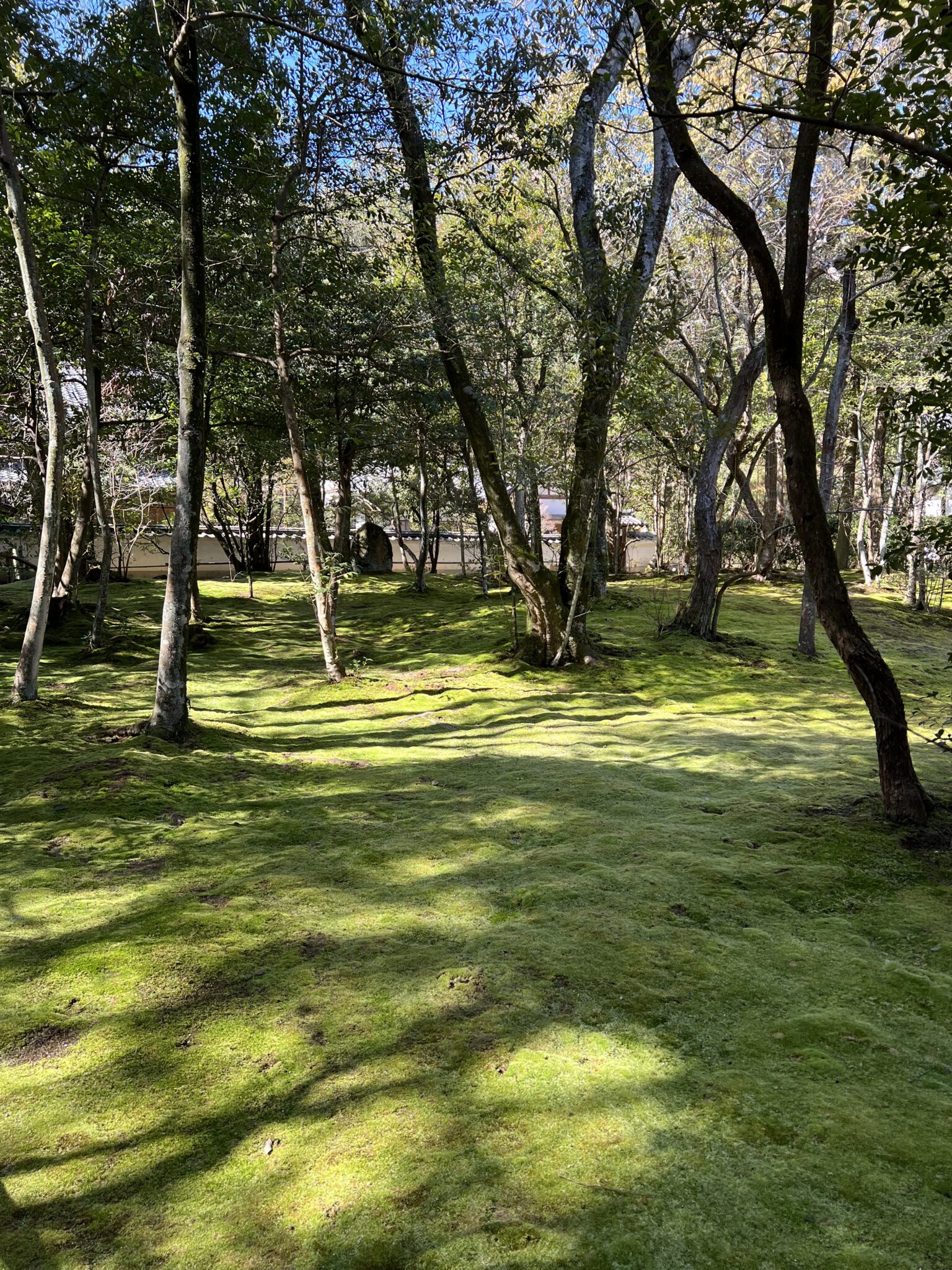
Treasures
National Treasure:
- Main Hall (Kamakura period)
Important Cultural Property:
- Standing Statue of Gigeiten: The head is from the Nara period, while the body is possibly from the Kamakura period.
There is a theory that the body was made by Unkei, though it is not certain. The statue exudes a very feminine quality, with a gentle and embracing warmth as well as a sense of sensuality. Upon entering the hall, you immediately notice her slightly tilted head, and it’s hard to look away, so captivating is her presence. Unusually, this statue also displays the rare characteristic of being a roshi bosatsu, a bodhisattva showing teeth.
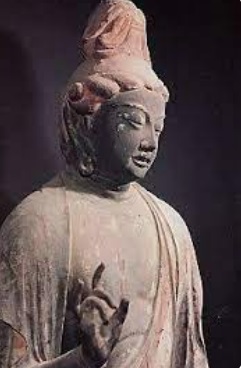
Yakushi Nyorai (Main Deity) – Possibly from the Muromachi period
Nikkō and Gakkō Bosatsu – Possibly from the late Heian period? They were not originally part of a set with Yakushi Nyorai.
Standing Statue of Taishakuten – The head is from the Nara period, while the body is from the Kamakura period. Currently deposited at the Nara National Museum.
Others.
Flowers
Spring: plum flowers and cherry blossoms
Even after finishing my visit, I found it hard to leave the beautiful white sand in front of the Main Hall. I sat on a bench for a while, enjoying a journey through time.
